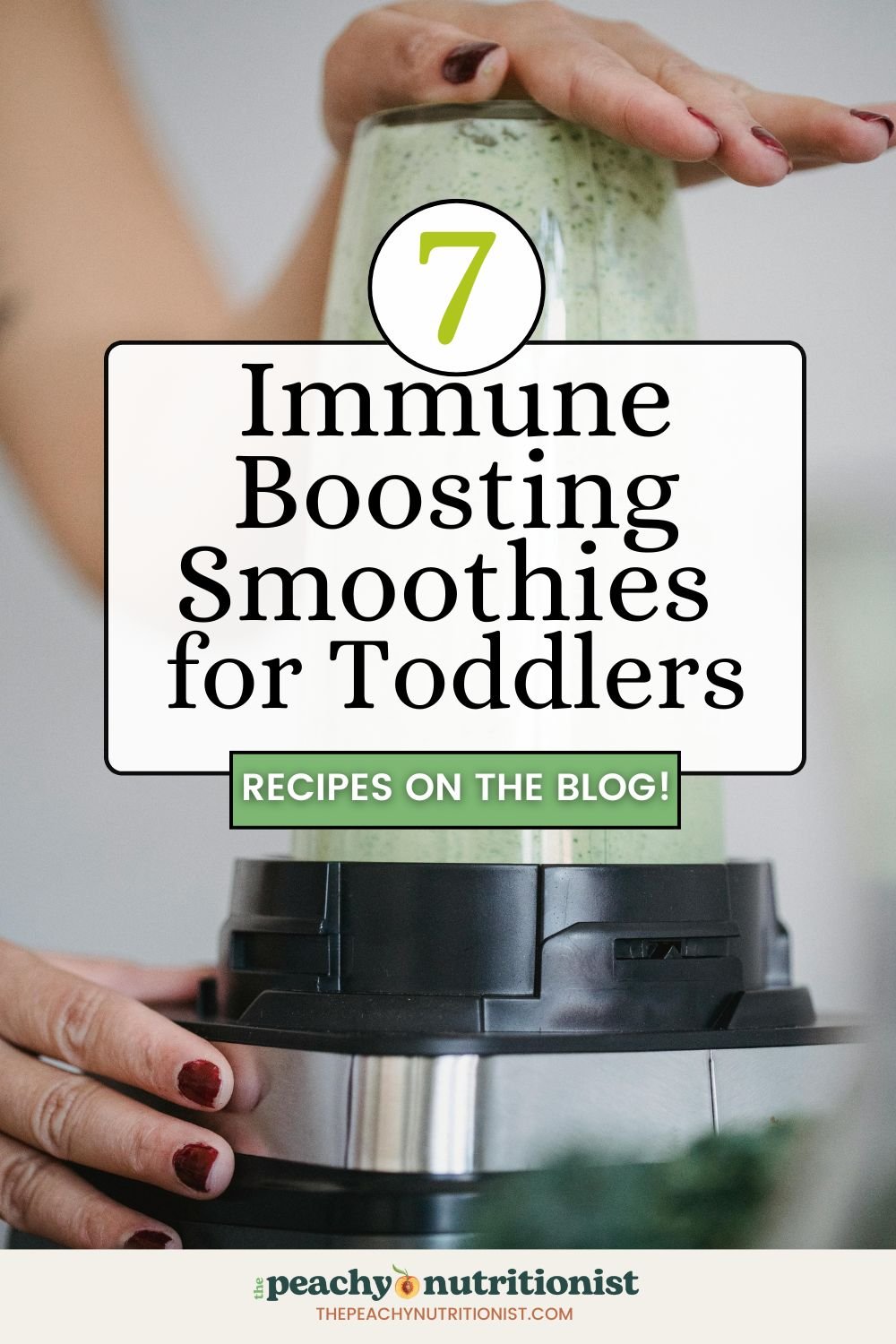Why is My Kid so Hyper all the Time?: 5 Root Causes for Hyperactivity
This article may contain affiliate links (which basically means if you buy something from a link on my site, I get a small percentage kickback from it.) However it’s no extra cost to you and it simply helps support this blog. Thank you so much for being here! I so appreciate you and hope you enjoy reading my articles!
For many parents, navigating the seemingly endless energy levels in their kids is a daily challenge. If you’re wondering why your child is constantly on the go or struggling to stay calm, know that you’re not alone. As we look closer, there are often very real, science-backed reasons why some kids seem more hyperactive than others. Many of these reasons relate to underlying physiological processes that can be addressed with targeted changes. Let’s dive into five common causes of hyperactivity from a functional nutrition perspective but let’s first look at the data.
The Rise in Hyperactivity in Kids
In recent years, more and more parents have been noticing signs of hyperactivity and focus issues in their kids. If you feel like your child’s energy levels are unusually high or they’re struggling with attention, you’re not alone. Studies are showing an increase in hyperactivity and attention-related challenges among kids today. According to the CDC, around 9.4% of kids in the U.S. have been diagnosed with ADHD, and that number has been rising over the years.
Researchers are connecting this rise to changes in kids’ environments, diets, and daily routines. For instance, more time spent on screens, more processed foods, and less time moving around outside can all affect behavior. A study in JAMA Pediatrics shows that issues with hyperactivity and attention are now starting earlier and happening more frequently. The sugary drinks, processed snacks, and screen time that have become more common in kids’ lives may be affecting how they focus and control their energy.
Symptoms of Hyperactivity
Hyperactivity can look different from one child to another, but there are some common signs. Here are a few things to watch for:
Fidgeting and trouble sitting still: Kids with high energy might always seem to be moving, like tapping their feet or shifting around in their seats, even when they’re supposed to be calm.
Impulsiveness: They might have a hard time waiting their turn, interrupting others, or acting on impulse without thinking it through.
Short attention span: Kids with hyperactivity often struggle to stay focused on tasks or activities, even ones they usually enjoy. They might get bored or distracted easily.
Constant talking or noise-making: They may talk a lot, even at times when it’s not appropriate, or make sounds as a way to release energy.
Difficulty with quiet play: Some kids with hyperactivity find it hard to sit down and play quietly by themselves. They seem to need constant stimulation or movement.
These behaviors are common in kids and can come and go, especially if they’re excited or tired. But if you notice these signs frequently and see that they’re making daily life harder for your child, it may be time to look deeper.
Is My Kid Just Hyper or Do They Have ADHD?
It’s normal to wonder if your child’s high energy is just part of their personality or if it might be a sign of ADHD. Here are a few ways to help figure out if it’s just typical energy or something more that could benefit from support.
Frequency and Consistency: Kids naturally have bursts of energy, and they can be more active after sitting for a long time or eating something sweet. But with ADHD, the symptoms show up consistently across different settings (like at home, school, and with friends) and usually last for at least six months. If your child’s hyperactivity doesn’t seem to go away and is affecting different areas of their life, it may be worth exploring ADHD.
Impact on Daily Life: Kids with high energy can sometimes have trouble focusing, but they usually settle down with structure or as they get older. For kids with ADHD, their behavior often affects their ability to do well in school, make friends, or take part in activities. Even with routines, support, and discipline, they might still struggle.
Inattention: Many high-energy kids get distracted sometimes, but kids with ADHD may have more noticeable issues with attention. They might lose track of conversations, forget instructions, or struggle to finish tasks, even when they want to.
Higher Levels of Impulsivity: While some impulsiveness is normal, kids with ADHD may have a harder time controlling impulses than other kids. They might interrupt conversations more often, have difficulty waiting their turn, or act in ways that are disruptive or unsafe.
5 Root Causes of Hyperactivity in Kids
1. Blood Sugar Fluctuations
Blood sugar is a key factor in regulating mood, energy, and focus. When kids consume foods high in sugar or refined carbs—think juice, white bread, or cookies—their blood sugar levels spike quickly, leading to a rapid boost in energy. This spike, however, doesn’t last long. The body responds by releasing insulin to bring down blood sugar levels, which often leads to a sudden crash. When blood sugar drops, the brain and body search for quick energy, causing mood swings, irritability, and yes, hyperactivity.
What You Can Do:
Balance meals and snacks with a combination of protein, healthy fats, and fiber. Each of these components helps slow down digestion, leading to more stable blood sugar. For instance, instead of plain apple slices, serve them with almond butter for added protein and fat.
Avoid high-sugar snacks like juice or processed treats. Opt for whole fruits and veggies with added proteins or fats. The fiber in whole fruits helps slow the release of sugar into the bloodstream.
Maintain regular meal and snack times to prevent sharp drops in blood sugar. This can lead to a steadier flow of energy throughout the day, minimizing spikes and crashes that fuel hyperactivity.
2. Food Sensitivities and Additives
Certain foods and additives can contribute to hyperactive behavior. The body’s reaction to food sensitivities or certain artificial ingredients often triggers inflammation, which impacts the nervous system and behavior. Common sensitivities that may lead to hyperactivity include dairy and gluten. Additives, particularly artificial colors like Red Dye 40, have also been shown to affect behavior in sensitive children.
When a child consumes a food they are sensitive to, their immune system recognizes it as a threat, releasing inflammatory chemicals. This can lead to symptoms like irritability, hyperactivity, and poor focus. Food additives, particularly artificial colors, have been linked to changes in neurotransmitter function in the brain, which can impact mood and activity levels.
What You Can Do:
Track their diet to identify potential sensitivities. A food journal can help you pinpoint patterns by documenting what your child eats and any behavioral changes afterward.
Eliminate known irritants under professional guidance. Removing foods like gluten or dairy temporarily can help you see if symptoms improve.
Opt for whole, minimally processed foods as these are generally free from additives and artificial colors that can trigger hyperactivity.
3. Gut Health Imbalances
A child’s gut health can influence their brain health and behavior through what’s known as the gut-brain axis. The gut and brain communicate via the vagus nerve, and imbalances in gut bacteria can disrupt this connection. For instance, when the balance of “good” bacteria in the gut is low, it allows “bad” bacteria to grow, which can produce compounds that may affect behavior, mood, and focus.
Gut bacteria produce short-chain fatty acids, which have a direct impact on the brain. When these bacteria are balanced, they can help regulate neurotransmitters like serotonin, which plays a role in mood and calmness. However, an imbalance can disrupt this production, contributing to irritability or hyperactivity.
What You Can Do:
Incorporate probiotic-rich foods like yogurt (without added sugars), kefir, sauerkraut, or pickles. These foods can support a diverse and balanced microbiome, which is essential for healthy brain-gut communication.
Focus on fiber-rich foods, as fiber feeds beneficial gut bacteria. Whole grains, vegetables, and fruits provide the fiber needed for these bacteria to thrive.
Reduce sugar intake, as excess sugar feeds harmful bacteria, potentially disrupting the balance of gut flora.
4. Nutrient Deficiencies
Adequate levels of certain vitamins and minerals are crucial for optimal brain function, energy regulation, and mood stability. Nutrient deficiencies, especially in iron, magnesium, and omega-3 fatty acids, can be linked to hyperactivity and attention issues.
For instance, iron is essential for delivering oxygen to cells, including brain cells. A deficiency can lead to fatigue and irritability, which may manifest as hyperactivity in some kids. Magnesium is critical for regulating the nervous system and producing neurotransmitters, while omega-3 fatty acids are necessary for brain health, helping with focus and emotional balance.
What You Can Do:
Increase nutrient-dense foods in your child’s diet, focusing on iron-rich options like lean meats, spinach, and beans. Omega-3s are found in fatty fish like salmon and in seeds like chia and flaxseeds.
Consider a quality supplement if your child has trouble getting these nutrients through food. A children’s multivitamin or omega-3 supplement may help fill any gaps. Consult with a pediatrician for guidance.
Limit processed foods, as they often lack essential nutrients and can crowd out more nutrient-rich options.
5. Sleep Quality and Quantity
Sleep is essential for restoring the brain and body. Without adequate sleep, children can experience irritability, decreased focus, and hyperactive behaviors. Sleep allows the brain to consolidate memories, process emotions, and regenerate cells. Poor sleep quality or insufficient sleep can lead to an overactive stress response in kids, which can show up as restlessness or hyperactivity during the day.
Children’s brains also rely on deep sleep cycles to regulate neurotransmitters and hormones, both of which play a role in mood, behavior, and attention. When sleep is disrupted, these processes are too, impacting energy levels and self-regulation.
What You Can Do:
Create a calming bedtime routine with activities like reading a book, taking a warm bath, or listening to soothing music to help them wind down.
Limit screen time before bed, as the blue light emitted by screens can disrupt the production of melatonin, the hormone responsible for sleep.
Encourage a consistent sleep schedule, even on weekends, to help regulate their internal clock, which can improve both sleep quality and daily energy.
Why Identifying Root Causes Matters
Understanding the underlying causes of hyperactivity is about helping your child feel their best by supporting balanced energy and focus. This approach allows you to address specific needs rather than simply managing symptoms. By stabilizing blood sugar, identifying potential food sensitivities, balancing gut health, ensuring nutrient intake, and improving sleep quality, you’re equipping your child to function at their best and feel more in control.
Hyperactivity doesn’t have to be a constant challenge. With these functional nutrition strategies, you can work towards creating a calmer, healthier environment for your child. And as always, consult with a healthcare provider for personalized guidance to ensure these changes are tailored to your child’s needs.
Getting Back to the Basics of Wellness for Raising Our Kids
When it comes to supporting our kids’ health, getting back to the basics of wellness can make a significant difference. Modern life is packed with constant stimulation, from screens and busy schedules to processed foods and environmental stressors. By focusing on foundational wellness habits, we can create a more balanced and supportive environment for our children. Here are some core wellness principles that help build a strong foundation for physical and emotional health.
Nourishing Whole Foods
Our kids’ bodies thrive on real, nutrient-dense foods that give them the vitamins, minerals, and energy they need for growth and focus. Processed foods, with their added sugars and artificial ingredients, are common but don’t offer the same benefits. When we prioritize whole foods, like fruits, vegetables, whole grains, and proteins, we’re supporting their physical development, stabilizing their energy, and helping them feel more balanced.
Make simple swaps: Replace sugary cereals with oatmeal or yogurt topped with fresh fruit and seeds, for example. Small, consistent choices add up.
Encourage a colorful plate: Each color in fruits and veggies provides different nutrients, so a rainbow of foods means a range of vitamins and minerals.
Involve them in meal prep: Kids are more likely to try new foods when they’ve had a hand in preparing them, making meals a great opportunity to build positive associations with healthy foods.
Prioritizing Quality Sleep
Sleep is the body’s natural way of restoring itself. When kids get enough quality sleep, they’re better equipped to manage emotions, focus in school, and even handle physical activity. Setting up healthy sleep habits early in life is a key step toward long-term wellness.
Establish a regular bedtime routine: A consistent routine can signal to your child’s body that it’s time to wind down. This could include brushing teeth, reading a book, and turning off screens.
Set screen limits: Reducing screen time, especially before bed, helps protect natural sleep patterns. Blue light can interfere with melatonin production, making it harder for kids to fall asleep.
Create a calming sleep environment: Dark, quiet, and slightly cool rooms promote better sleep. Consider blackout curtains and white noise machines if needed.
Encouraging Active Play
Movement is essential for a child’s development and health. Active play not only builds strength and coordination but also supports mental wellness by releasing endorphins, improving mood, and boosting self-esteem. In today’s tech-centric world, it’s more important than ever to encourage kids to get outside and move.
Set aside screen-free playtime each day where kids can explore outside or engage in unstructured play.
Introduce family activities like going for walks, hiking, playing catch, or even doing a quick workout together. This can make movement fun and reinforce healthy habits.
Model a love for movement: Kids who see their parents staying active are more likely to build positive associations with exercise. Whether it’s a morning stretch or an evening walk, let them see you enjoying movement.
Reducing Toxins and Environmental Stressors
Our environment plays a significant role in wellness. From the products we use at home to the foods we eat, small changes can reduce exposure to toxins that may affect behavior, mood, and overall health. Simple steps, like choosing natural cleaning products and reducing processed foods, can create a healthier space for our kids.
Choose non-toxic cleaning and personal care products: Look for items labeled as non-toxic or free of harsh chemicals.
Focus on clean air and water: Good air quality supports respiratory health. Use an air purifier if needed, and make sure your water source is clean, using a filter if necessary.
Opt for fresh, whole foods whenever possible: Processed foods often contain preservatives and additives. Whole foods minimize exposure to synthetic chemicals and provide nutrients our kids need.
Building Emotional Wellness through Connection
Emotional wellness is just as important as physical health. Kids thrive on connection, routine, and love. Building time into our days to connect emotionally with our children can support their resilience, self-esteem, and ability to manage stress.
Prioritize one-on-one time: Even a few minutes of undistracted time with your child each day can make a big difference. Listen to their feelings and show interest in what they’re experiencing.
Encourage emotional expression: Teach your child to name and express their emotions in healthy ways. This might include breathing exercises for stress or journaling for older kids.
Model healthy coping strategies: Kids watch us for cues on how to handle emotions. Showing them how you handle stress, talk about feelings, and take time for self-care teaches them lifelong skills.
By focusing on these basics, we’re not only creating a nurturing environment for our kids to grow in but also equipping them with habits and strategies that can benefit their well-being for years to come. Simple adjustments to nutrition, movement, sleep, environmental exposure, and emotional support form the foundation for a healthy, happy life. In a world full of quick fixes and convenience, returning to the essentials is one of the most effective ways to support our kids’ health naturally and sustainably.
Join the Nourished Family Academy Course Today & Take Charge of Your Family Wellness!
You want the best for your family, but between the endless nutrition advice, confusing labels, and picky eaters, it’s easy to feel overwhelmed and stuck. You know how important it is to provide your kids with real, nourishing foods, but where do you even begin? Imagine feeling confident in every choice you make—knowing you’re giving your family the tools to grow, thrive, and avoid the health struggles that so many face today.
With the Nourished Family Academy Course, you’ll get step-by-step guidance, expert tips, and practical solutions to create a balanced, healthy lifestyle for your family. No more confusion or guilt around meals—just simple, effective strategies that work for busy moms like you, trying to support family wellness for now and for generations to come. Picture your mornings filled with easy, nutritious breakfasts and your evenings free from battles at the dinner table, knowing you’re setting the foundation for lifelong wellness for your kids.
Ready to make this change for your family? Click here to get on the waitlist or enroll now, and start your journey towards a healthier, happier home!
Bailey Petrucelli is a Women’s & Family Nutritionist and wellness advocate, passionate about helping moms and families take charge of their health. On her blog, The Peachy Nutritionist, she shares practical tips, empowering holistic wellness information, nutritious recipes, and real-life wellness strategies to empower moms to create a healthy and balanced lifestyle for their families.




























Need ideas for healthier Valentine’s Day candies for kids? Check these out! Links included!